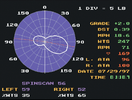Do I Need A Left/Right Power Meter for data analysis
Posted by Matt Russ on 10th Jan 2024
When it comes to training technology I always advise customers to only purchase what they need and will use. Data is useless unless applied and this is of course relevant to power meters as well. It is not to say that high level power data analysis has no place; simply that you must choose if it has a place in your training.
I will subtract all the useful ways in which power data can be analyzed, and limit this article to left/right analysis which represents an increase in power meter price. There are a great number of algorithms that have incredible use in training analysis requiring only single side analysis. Consistency of data is more important than an extra 1% in accuracy. In other words if a power meter reads 1% lower than another this is ok as long as it reads consistently 1% low (and it is the only power meter you are using). This creates a reliable data stream.
There are two main reasons I would utilize a dual sided power meter- to change cycling form or to analyze position. Each of these can have a dramatic impact on your cycling performance and should not be overlooked.
Very few cyclists analyze their form; they just ride. But small changes in knee position, ankle movement, or posture can improve wattage. The vast majority of humans are asymmetrical meaning they have muscle imbalances, leg length discrepancies, one hip higher than the other, etc.. Left/right power analysis quickly identifies the stronger side. Again, almost everyone will have a difference in power from left to right, but if this difference is significant, say 5% or more, correction of your cycling form may be warranted. One of the typical things that I observe is one knee flaring out while the other has better alignment. The legs should be working like pistons with alignment between the hip, knee, and foot. A knee deviating out of alignment bleeds off power. Simply putting a cyclists in front of a mirror and working on correction can increase power output on the less dominant side. This can also identify a strength issue that could be addressed through strength training. "Ankling" or excessive motion from the ankle is another area that can be addressed and improved upon. Essentially any form change that yields an increase in power is a positive one and the rider can experiment in real time form changes. For instance, if a rider observes power dropping off on the left side it may be an indication that they are fatiguing and falling into their old "knees out" form. This in and of itself can be very useful in a race.
Left/Right power analysis is highly valuable as a fitting tool. When adjusting a customers position we have two essential goals; to increase leverage and comfort. Thinking of the Femur as a lever arm, moving that lever arm to a more advantaged position yields more wattage. A good process addresses each leg individually. If there is correctable asymmetry, such as a leg length discrepancy, left/right analysis quickly identifies it. Varus/valgus of the foot can by different on the left vs right side. By correcting each foot individually a more stable platform is created and more torque goes to the crank arm. Left/right analysis gives us real time feedback on these changes. It is important to note that not all changes yield actionable data and that the rider will have to acclimate to the new position. By re-evaluating position after an acclimation period we can test for improvement. It can even give empirical feedback on a saddle change.
Almost every cyclists wants to get faster and if you utilize left/right data in the right way it can yield improvement, but it also may help prevent and overuse injury or identify an ill fitted bike. When considering the purchase of a single sided vs dual sided power meter, make sure you have some form of visualization as to how you will use the data.


